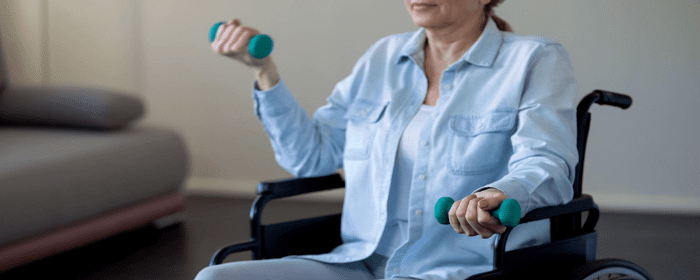
by admin | Apr 28, 2023 | Diabetes, Health Awareness, Regenerative Medicine, Stem Cell Therapy
Diabetes is one of the most common conditions in the world, affecting more than 37 million people in the United States alone.
Diabetes is a chronic condition that affects your body’s ability to process glucose, resulting in high blood sugar levels. An estimated 96 million people have prediabetes, meaning they could soon be diagnosed with Type 2 diabetes.
To avoid a diabetes diagnosis, it is important that you can recognize early indicators of the disease. The following are some signs that may mean you have diabetes:
Excessive Urination
One of the earliest signs of diabetes is excessive and unusual urination. When you have diabetes, your body does not use sugar properly. The sugar collects in your blood, and your kidneys go into overdrive to remove it from the body. Your overworking kidneys lead to the constant urge to urinate.
Increased Thirst
With increased urination, you will start to experience increased thirst. Constant urination can cause your body to become dehydrated, and you will feel parched, even if you drink an adequate amount for your body weight.
Weight Loss
Another early indicator of diabetes is extreme and unintentional weight loss. If you’ve noticed that you are losing a lot of weight without really trying to, you may have diabetes. For some people, this can be as much as 10 pounds in one month.
This weight loss occurs because your body is not processing glucose as it should be. Your cells become starved for glucose or energy and begin to find it elsewhere, causing you to burn fat at a rapid pace.
Diabetes Treatments
If you are experiencing these symptoms or other concerns, you may have diabetes or prediabetes. To get a proper diagnosis, speak to your regular physician. There are many treatment options for diabetes.
Some are exploring regenerative medicine, also known as stem cell therapy. Stem cell therapy for diabetes is a potential treatment approach that involves the use of stem cells to generate new insulin-producing cells that can help regulate blood sugar levels in people with diabetes.
Stem cells are cells that have the ability to differentiate into different cell types and can also self-renew and studies have shown that stem cells can differentiate into insulin-producing cells.

by admin | Apr 24, 2023 | Health Awareness, Stroke
Gait refers to a person’s manner of walking or moving on foot. After a stroke, gait can be significantly impacted due to the damage caused to the brain and nervous system. Stroke can affect gait in several ways, including:
Muscle weakness: A stroke can cause weakness or paralysis on one side of the body, which can affect the ability to lift and move the leg and foot during walking.
Spasticity: Spasticity is a condition that causes muscle stiffness and spasms, which can make it difficult to move the leg and foot smoothly during walking.
Balance and coordination: Stroke can affect the brain’s ability to control balance and coordination, making it harder to maintain a steady gait.
Foot drop: Foot drop is a condition where the foot drops down when walking, due to weakness or paralysis of the muscles that lift the foot. This can cause stumbling or tripping while walking.
Cognitive and perceptual changes: Stroke can also affect cognitive and perceptual functions, such as perception of depth and distance, which can affect a person’s ability to walk safely and confidently.
Gait training exercises can help stroke patients improve their gait by addressing these issues through strength training, coordination exercises, balance training, and other targeted interventions. Working with a physical therapist can also help stroke patients to customize their exercise program to their specific needs and abilities.
To regain your strength and improve your ability to walk after a stroke, you can practice gait training exercises like the ones below.
Flamingo Stands
Flamingo stands are one of the easiest gait training exercises to perform. You can stand freely in the middle of the room or with one hand against a wall for added support. Bend one leg up and backward into a flamingo position and remain standing on the other leg. Do this for about 30 seconds and then switch legs. Repeat ten times for each leg.
Seated Marching
Seated marching is a basic gait training exercise that can be performed from any seated position. You start by sitting with both feet placed on the floor in front of you and then lifting one leg up into your chest and placing it back down onto the floor. Repeat this with the other leg and then alternate between legs for ten repetitions.
Side Leg Raises
To perform a side leg raise, begin in a standing position. You can hold on to a chair for increased stability. Lift one leg outward to your side about 45 degrees. Hold this pose for several seconds before bringing your foot back down to the floor. Do 15 repetitions and then repeat with the other leg.
Knee Extension
For a knee extension gait exercise, you will start in a seated position. Extend one leg out in front of you and hold it parallel to the floor. Make sure to contract your thigh muscles and then slowly lower your foot back down toward the floor. Alternate back and forth between each leg for ten repetitions while maintaining a straight posture with your back.
It’s important to note that stroke patients should always consult with their healthcare provider before starting any new exercise program. Additionally, exercises should be tailored to the individual’s specific needs and abilities.

by admin | Apr 19, 2023 | Health Awareness
Exercise is important for good health because it offers a wide range of benefits for both physical and mental well-being. Here are some of the key reasons why exercise is crucial for good health:
Strengthens the Muscles and Bones
Exercise helps to build and maintain strong muscles and bones, which is important for overall physical health, especially as we age. When we exercise, our muscles are put under stress, which causes them to break down and rebuild stronger than before. This process is known as muscle hypertrophy, and it is how our muscles become stronger and more resilient over time.
Reduces the Risk of Chronic Diseases
Chronic diseases are long-term health conditions that often develop over time and are often caused by a combination of genetic, environmental, and lifestyle factors. Regular exercise can help to reduce the risk of many chronic diseases that may impact your heart health, immune system, mental health, weight, and cognitive function.
Improves Heart Health
Yes, exercise is great for heart health. Regular physical activity helps to strengthen the heart and cardiovascular system, reducing the risk of heart disease, stroke, and other cardiovascular problems. Exercise helps to make the heart pump stronger, lowers blood pressure, reduces inflammation, improves cholesterol levels, and improves circulation. Overall, regular exercise is a critical component of heart health, and it can help to reduce the risk of heart disease and other cardiovascular problems.
Boosts the Immune System
The immune system is the body’s defense against infections and diseases, and it plays a crucial role in keeping us healthy. Exercise can boost the immune system by helping to improve circulation, reduce inflammation, increase antibody production, increase white blood cell counts, and reduce stress.
Improves Mental Health
Exercise has been shown to improve mood, reduce stress and anxiety, and boost overall well-being. Some ways that exercise can improve mental health is by releasing endorphins which are natural chemicals in the body that can improve mood and reduce pain. It can reduce levels of the stress hormone cortisol, which can have a positive impact on mental health. It also helps improve sleep which is crucial for maintaining good mental health.
Further, it can boost self-esteem which can have a positive impact on overall well-being. And finally, it can reduce symptoms of depression and anxiety. It is important to note that exercise is not a substitute for professional mental health treatment, but it can be an effective complement to therapy or medication.
Helps with Weight Management
Regular physical activity can help to burn calories, increase metabolism, and maintain a healthy weight. With exercise, you can burn calories, increase metabolism, preserve muscle mass, reduce appetite, and improve insulin sensitivity.
Enhances Brain Function
Regular physical activity has been shown to have numerous benefits for brain health, including improved cognitive function, memory, and mood. It can increase blood flow to the brain, delivering more oxygen and nutrients that are necessary for optimal brain function. It helps to boost neuroplasticity, which is the brain’s ability to adapt and change in response to new experiences and information.
Cognitive functions can be improved, including attention, memory, and processing speed. And exercise has been shown to increase the production of BDNF, which is a protein that promotes the growth and survival of neurons in the brain.
Overall, exercise is a critical component of a healthy lifestyle, and the benefits of physical activity extend far beyond just physical health, but it is important to find a balance and engage in moderate exercise that is appropriate for your fitness level and health status. Talk to your healthcare provider to determine the exercise plan best for you.

by admin | Apr 14, 2023 | Health Awareness
If you struggle with things like chronic pain, poor mood, or sore muscles, you may be a candidate for cold water therapy. Immersing the body in cold water is becoming a popular treatment method that can address a number of concerns.
Cold water therapy is an innovative treatment approach that involves submerging yourself in freezing cold water for a predetermined amount of time. Cold water therapy can be used long-term for chronic conditions or in short sessions for things like sports injuries or muscle recovery.
The Benefits of Cold Water Therapy
Cold water therapy is growing in popularity because it offers a variety of benefits. The following are just three of the most notable advantages patients experience with cold water treatments.
Muscle Recovery
If you want to speed up muscle recovery after a game or intense workout, stepping into an ice bath could help. Research shows that cold water immersion may delay the onset of muscle soreness after exercising.
Pain Relief
Another potential use for cold water therapy is as a pain reliever. When used in a physical therapy setting, cold water immersion has been shown to lower inflammation and reduce chronic or acute pain.
Improved Mood
One of the lesser-known benefits of cold water therapy is as a mood elevator. Studies have shown that cold water immersion could be linked to an increase in dopamine, the neurotransmitter in your brain that makes you feel happier.
Seeking Cold Water Therapy
While it may be an effective treatment method for several concerns, cold water therapy is still considered an unconventional approach in certain circumstances. Before starting cold water therapy, discuss the details with your regular physician to determine whether this is the right course of action for you.

by admin | Apr 7, 2023 | Health Awareness
Having limited mobility can feel frustrating and discouraging, especially if your movements are restricted due to an illness or injury. But even with limited mobility, there are still ways to enjoy the benefits of exercise and promote general wellness.
Why You Should Still Exercise with Limited Mobility
No matter your level of mobility, you should try to exercise and stay active. Exercise offers benefits that include relieving stress and anxiety and reducing depression.
When you exercise, you trigger your body to release feel-good hormones like endorphins. Endorphins help energize you and boost your mood.
Aside from the mental health benefits, exercise also has physical benefits, which might include:
- Increased bone density
- Better sleep
- Lower blood pressure
- Better cardiovascular health
- Increased blood flow
- Reduced pain
The positive physical effects of exercise can help alleviate pain in many people. Because of these many benefits, it’s worth learning how to exercise with limited mobility.
Exercises for Limited Upper Body Mobility
If you have limited upper body mobility, you can try activities like these:
- Walking
- Jogging
- Swimming
- Biking
- Using an elliptical machine
These exercises will help you get stronger as you keep your body moving.
Exercises for Limited Lower Body Mobility
If you have limited lower body mobility or are in a wheelchair, practice these upper body exercises:
- Chair aerobics
- Air punches (with or without weights)
- Swimming
- Weightlifting
Some upper-body weightlifting exercises try to include bicep curls, shoulder presses, and triceps extensions.
Finally, look into whether any gyms in your area offer wheelchair training machines.
Starting Your Exercise Routine
When starting your new exercise routine while living with limited mobility, just remember to start small and slow, do a little every day, and expect a nonlinear journey.
You will have ups and downs, and some days will feel easier than others. This is normal and okay! What matters is not giving up.

by admin | Mar 31, 2023 | Chronic Pain, Health Awareness
Chronic pain can make even the simplest daily tasks feel impossible. However, exercise can help you manage some of your symptoms by providing pain relief and boosting mobility. Try some of these exercises to gain control over your chronic pain and enjoy a better quality of life.
Stretches
Stretching allows your muscles to relax and relieves painful tension that accumulates over time.
If you suffer from lower back pain, try the following stretch:
- Lie down on the floor on your back
- Raise both knees toward your chest
- Wrap your arms around your knees to pull them in closer
- Feel the stretch in your lower back muscles as you rock back and forth with your knees near your chest
- Set one foot on the floor and move your other foot so that your ankle is resting near your knee
- Pull on the back of your leg that has your foot resting on the floor
This action stretches your glutes and lower back, and it can reduce stiffness and pain when practiced regularly.
Outdoor Walking
Walking can reduce chronic pain by exercising your leg muscles and improving circulation. And being surrounded by nature can offer additional physical and mental health benefits.
Take a walk outdoors once a day to relieve some of your pain. You will benefit from sun exposure as well as the low-intensity movement that comes with walking.
If you are unable to walk outdoors, you can use an indoor treadmill to boost your blood flow and get moving each day.
Swimming
Swimming is a popular low-impact exercise for many people who struggle with chronic pain. When you swim, your joints can remain comfortable as you move fluidly through the water.
Low-impact cardio exercises like swimming get your blood pumping and your muscles moving with less strain on your body. Take a dip in the water next time you feel like exercising.
Relieve Pain Naturally with Daily Exercises
If you practice these techniques daily or weekly, you may see great relief from your symptoms. Chronic pain can be debilitating, but with regular exercise, you can start healing from the inside out.







 St. Petersburg, Florida
St. Petersburg, Florida
